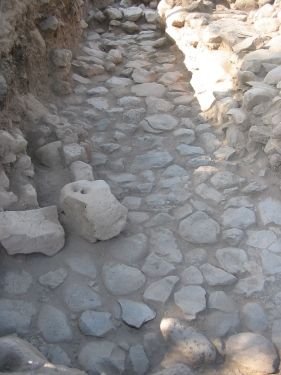Dig Spotlight: Tiberias, Jewel on the Lake

Tiberias, Israel -- Like a great jewel, the modern city of Tiberias rises on the slopes hugging the shore of the Sea of Galilee. It is, among other things, a popular resort destination in Israel. But not far from its shops and hotels lies another Tiberias......an ancient one. In about 20 C.E., Herod Antipas saw this location as a seat of power and established Tiberias as a governing center and a city of prominence. In addition to its association with a region where Jesus walked, taught and performed his many miracles, it became a center of Jewish political and spiritual leadership. Here, the Sanhedrin sat. Here also, the Talmud was compiled and edited. In the Byzantine period, it drew thousands of Christian pilgrims and during the time following the Arab conquest it served as the capital of northern Palestine. Needless to say, its ancient political, spiritual, and attendant economic significance endows the location with archaeological treasures yet to be unearthed. Add to this the fact that the ancient site has been relatively unaffected by later construction, and you have a site that promises incredible potential for new archaeological discoveries. Professor Yizhar Hirschfeld of the Hebrew University and Professor Katharina Galor of Brown University will be leading a team of scholars, students and volunteers to uncover more remains of the ancient city, including a Roman theater complex in November, 2005 (November 6 to December 12) and an ancient Roman basilica and auxiliary buildings in March, 2006 (March 1 to April 7). You will learn excavation techniques and participate in afternoon workshops, slide show lectures and field trips to other nearby sites of archaeological significance. You will be staying in the Aviv hotel, situated near the shore of the Sea of Galilee, just 5 - 10 minutes' walk from the excavation site. Rooms are air-conditioned, with TV, telephone, private bathroom and a balcony. Breakfasts are at the site and lunch and dinner are at the hotel dining room. You will also be close to the tourist attractions in Tiberias, Tiberias Hot Springs and the Promenade with its various restaurants and pubs. As if this isn't enough, you will be there when the temperatures are comfortable. Does this sound interesting? If it does, check out the website for more information and application procedures.





